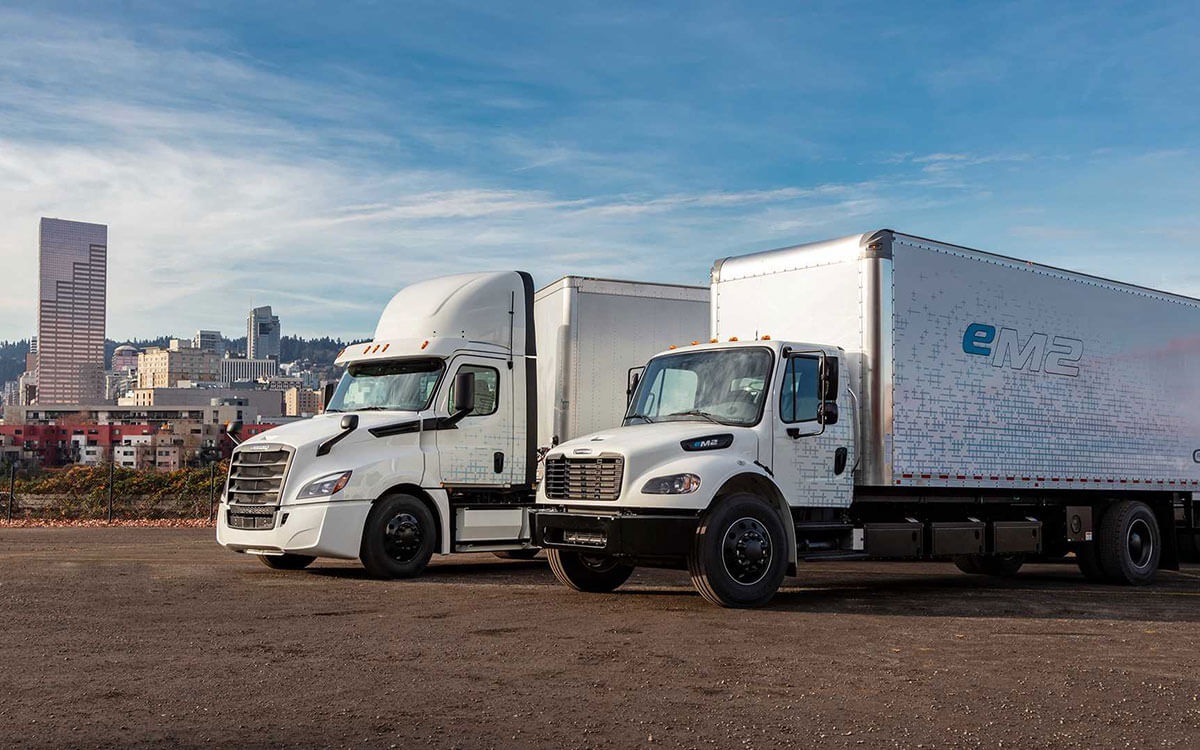What You Need To Know About California’s New One Time Fleet Reporting Guide

The California Air Resources Board (CARB) spent some time working to request feedback for the reporting requirements they’re planning to implement soon. The goal of the new policies is to support the accelerated production of medium- and heavy-duty trucks that operate while producing absolutely zero emissions.
Out of the three policies CARB is designing, the Advanced Clean Trucks Regulation is the most advanced, seeking to exceed climate and air-quality targets set by the state. CARB unanimously passed it at the end of June and the two other policies passed with similar goals, aiming to establish rules for zero-emission fleets and address low-nitrogen oxide engines.
Together, these policies show a dedication to accelerate the adoption of zero-emission trucks and help get diesel vehicles off the roads of California. They apply to all heavy-duty pickups and Class 2b vehicles all the way through Class 8 vehicles, those being freight-hauling tractor-trailers.
What Does This Regulation Mean?
The impact of these regulations are far-reaching, with one notable requirement being placed on truck manufacturers, who will now have to sell at least a certain amount of zero-emission trucks each year, based on their overall annual sales. Other “entities” will also be required to file a report by April 2021. This report is a one-time ordeal under the regulation, and the data will be used to further develop future standards for zero-emission fleets.
Proponents reinforce that these regulations are necessary in order to help California clean up its transportation sector and address widespread emissions issues. Since this sector contributes to about half of the state’s greenhouse gas emissions, these regulations are truly pressed for time if the state is going to hit its future goals.
Who Has to File a One-Time Report?
Manager of on-road compliance at CARB, Jerry Berumen, explained that the one-time fleet report mandated under the new regulation will not impact any other reporting requirements that state agencies or CARB may mandate. Those required to file the one-time report include:
- Organizations earning over $50 M in revenue and owning at least one vehicle that has a gross vehicle weight rating of 8,500 pounds or more;
- Organizations owning 50 or more vehicles with a gross vehicle weight rating of 8,500 pounds or more;
- Organizations dispatching 50 or more vehicles with a gross vehicle weight rating of 8,500 pounds or more in or throughout the state of California;
- Any government agency owning at least one vehicle with a gross vehicle weight rating of 8,500 pounds or more.
Some exemptions will exist for certain transit fleets, school buses, tactical military vehicles, vehicles not yet sold, and emergency response vehicles. Meanwhile, Berumen and others promise they are trying to make the filing process as streamlined as possible.
Will You Have to File?
CARB has already clarified a few details when it comes to who will have to file the one-time report. It will include vehicles that were constructed for on-road use, even if they are currently without plates and/or operating off-road. This will include ground-support vehicles for aircraft and airports that were created to operate as on-road vehicles, like box trucks with scissor lifts, pickups, and trucks.
Fortunately, CARB has been very responsive to inquiries and their answers have helped clarify things for organizations across the board. They also say they’re available for one-on-one virtual and in-person meetings regarding CARB’s requirements for larger organizations that may have to report. CARB plans to offer similar opportunities for individuals that represent transportation firms, including industries using heavy-equipment (i.e., construction, municipal governments) and industry brokers.
Why Are The One-Time Reports Important?
CARB says their primary goal is to gather the necessary information from stakeholders in the industry so that they can better understand how fleets are composed throughout the state. They’re also seeking insight into operations, like how long the average truck stays in a fleet. This data will be used to write the future rules for zero-emission fleets in California.
CARB has already acknowledged that much of this data will be brand new, not currently existing in other databases. Still, some of this data is already stored somewhere, like in dispatch or maintenance records held by the organizations who will need to file the reports.
How to File the Report
The one-time report will be filed using an Excel-based reporting spreadsheet. Organizations will be asked to place their information into it regarding each type of vehicle they own. The report will ask for information an organization already has for their fleet from 2020 and 2019, like the data in TRUCRS (Truck Regulation Upload, Compliance, and Reports System).
The agency is currently seeking beta testers to try out this new spreadsheet design, which they’re continuing to develop. They’re also working on revising their data-collection guides.
According to a first draft for the reporting guide, CARB says: “The information is necessary to determine where zero-emission vehicles are suitable now, what are the barriers and what vehicle characteristics are necessary to meet different fleet needs … This information will support future measures to reduce emissions of oxides of nitrogen, fine particulate matter, other criteria pollutants, toxic air contaminants, and greenhouse gases from vehicles.”
The reporting guide and spreadsheet are expected by the end of October 2020 with the deadline for filing being April 1, 2021.
Stay On Top of the Industry.
Interested in more trucking industry news? Sign up for the Suppose U Drive newsletter to get industry news delivered straight to your inbox.


